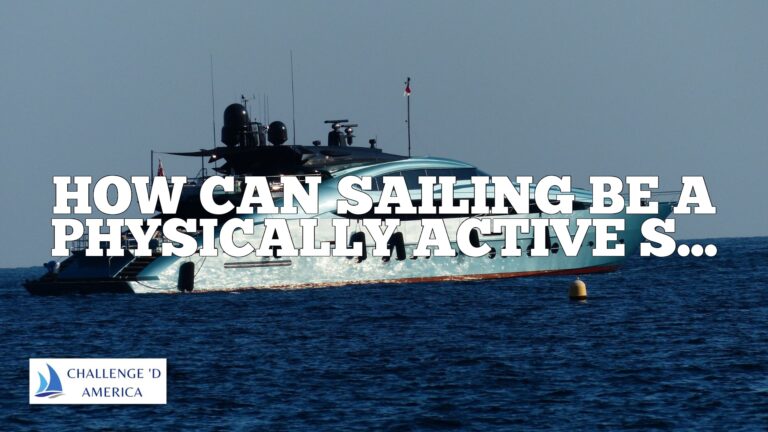What Is a Bristol Knot?
A Bristol knot, also known as the no-name knot, is an essential knot used in sailing and marine activities, specifically when connecting two lines together.
It can be used to join a heavier piece of monofilament line, such as when constructing a wind-on leader, or it can be used to attach the double line of a Bimini twist or Spider hitch loop knot to something else like another line or an anchor point.
The knot is also useful for attaching braided lines with knots that are too large or too stiff to be tied with other knots, such as the albright knot or nail knot.
The Bristol knot is easy to tie and can provide a secure connection that will hold up in tough conditions while remaining low profile enough that it won’t interfere with other rigging tasks on your vessel.
What Does the Bristol Knot Accomplish?
The main purpose of tying a Bristol knot is to connect two lines together securely while still allowing them some flexibility and ease of use, especially in high winds and choppy water conditions where other knots may not hold up as well due to their bulkiness or stiffness.
The small size of the knot also makes it great for attaching braided lines with knots that are too large or too stiff to be tied with other knots, such as the albright knot or nail knot, without creating unwanted kinks in the line that could reduce its strength or cause it to fail prematurely in tough conditions on the water.
Overview of How to Tie a Bristol Knot
Tying a Bristol knot is relatively easy and can be done with just three steps: first prepare your materials, second make two loops, third tie off the end by passing it through both loops twice before pulling tight and trimming off any excess line material.
It’s important when tying this type of knot – like any other – that you take your time and make sure you have even tension throughout all parts of the process so that you end up with an evenly balanced connection between your two lines that will give you strength and security when out on the water.
Preparation of Materials for Tying a Bristol Knot
Before you start tying your own Bristol knot, it’s important that you gather all necessary materials beforehand so you don’t have any trouble during the process itself. You’ll need two pieces of line – one heavy monofilament line and one lighter braided line – and some scissors or snips if needed at any point throughout tying your knots.
Once you have these materials ready, you should also ensure they are both clean by running them through some fresh water if necessary before starting your task so there are no contaminants on either side which could cause problems down the line (no pun intended).
Step-by-Step Guide to Tying a Bristol Knot
Once your materials are prepared, you’re ready to start tying your own secure yet flexible connection between two lines using this simple three-step process:
1) Start by creating two loops on either side of your heavy monofilament line – one loop on each end – by wrapping it around itself twice before pulling tight so they’re even on either side,
2) Take your lighter braided line and pass it through both loops twice before pulling tight in opposite directions,
3) Finally trim off any excess material from both sides so you have a neat finish without any loose ends hanging around which could potentially get caught up in other rigging tasks further down the road (or sea).
Advantages of the Bristol Knot
The biggest advantage of using this type of knot over other types is its low-profile nature which makes it perfect for attaching smaller items such as lures or hooks without interfering with larger tasks being done nearby which would otherwise require more bulky knots like figure eights or bowline knots etc.
Additionally, because this type of connection allows some flexibility between both sides (which can help absorb shock from waves better), it’s ideal for use in offshore fishing environments where boats may experience rough waters more often than not due to its increased strength over traditional knots such as half hitches etc..
Lastly because this type of connection requires fewer steps than others (just three compared to five for similar sized connections), it’s much quicker and easier for mariners who need something fast but secure at sea!
Disadvantages of the Bristol Knot
As great as this type connection can be when used correctly there are unfortunately some drawbacks associated with using this particular style over others such as half hitches etc.. One key disadvantage here is that because this type doesn’t create an interlocking loop like most others do (which helps keep everything connected even during tough conditions), there is an increased risk that things could come undone much more easily if not properly tied off correctly every time – something which must be monitored carefully by mariners who want their connections secure at all times while out at sea!.
Additionally because many anglers opt for this specific type due to its ease–of–use compared to others (since less steps are required) there is also an increased chance here that mistakes could be made during construction leading to weakened connections which do not last quite as long as those made using more complex methods (such as figure eights etc.).
Other Uses for The Briston Knot
This particular style connection isn’t just limited to boating applications either, in fact there are many ways in which mariners can apply this type knowledge when constructing tasks outside its main sphere usage too!
For example if someone wanted to construct something such as fishing lures with braided material then they could use their newfound knowledge here too since these connections allow some extra freedom when moving around while still providing extra security over basic half hitches etc.
Additionally if someone was looking into making decorative items from rope then they could apply their knowledge here too since these types connections provide reduced bulkiness compared to most others making them perfect for intricate designs where space may otherwise be limited!.
Tips & Tricks For Tying A Strong & Secure Briston Knot
When tying your own Briston knots there are several tips & tricks experienced sailors use in order ensure their connections remain strong & secure throughout even tough conditions on open seas:
- Always make sure you have enough length on both sides before starting so that everything remains even during each step,
- Double check each stage carefully after completing them so nothing was missed out inadvertently,
- Ensure everything is pulled tightly together at each stage so nothing becomes loose over time,
- Finally remember practice makes perfect so don’t expect amazing results right away but instead take regular breaks & review what’s been done previously often until everything becomes second nature!
Conclusion
In conclusion tying a Briston knot isn’t impossible but rather just requires patience & practice over time until everything becomes second nature! By taking regular breaks & reviewing what has already been done previously often helps immensely too since mistakes made early on can often cause problems much later down the road if unnoticed quickly enough! Lastly remember everyone has different strengths & weaknesses so don’t compare yourself against others since everyone learns differently & progress comes at different speeds depending on individual circumstances!.







